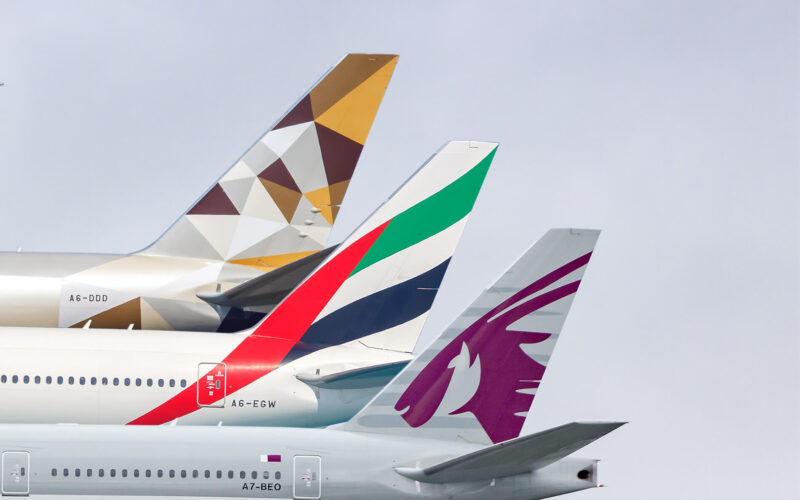The Big Three Middle Eastern airlines are synonymous with luxury and status: a feature that allows them to punch way above their weight in brand recognition. Everybody knows Emirates, Etihad Airways, and Qatar Airways ‒ the big Three of the Middle East.
They fly the newest and the largest wide-body jets and operate in a hub-and-spoke model – only connecting the largest and the most prestigious destinations. They are an antithesis of low-cost carriers, never passing an opportunity to show off, and thrive not without the backing of their respective governments.
But one of them is not like the others. Etihad Airways, one of the two UAE-based ME3 airlines, have been struggling to keep up with the other two. It has encountered all kinds of financial and management troubles even before the COVID-19 crisis; it has been very slow at rebuilding the post-lockdowns network, and its massive investments in foreign airlines have turned out to be disastrous.
It is still a large, luxurious, hub-and-spoke airline from the Middle East, but can it be compared to the other two? Is it fair to call it one of the Big Three? Let’s take a look.
Is Etihad Airways shrinking?
As of March 2021, Etihad Airways flew to almost twice fewer destinations than Emirates and Qatar Airways. It was rebuilding its network painfully slowly – only significant additions to it happened in June and September 2020, right after the first wave of lockdowns passed.
In fact, the carrier’s network has been getting smaller for a while now. Its rapid expansion after the start of operations in 2003 was rivaled by almost as rapid contraction after the peak in 2014.
A similar trend can be observed in its fleet, which started contracting in 2017. Has the airline been shrinking?
While Etihad’s network and fleet have been shrinking, its passenger numbers stayed roughly the same though. A small decrease can be noticed since 2017, but not even close to that observed in network and fleet size.
Failing to catch up
This graph has several important caveats when it comes to the comparison among the Big Three. It shows the performance not through the calendar year, but through the fiscal year (FY) – meaning that the “year” starts and stops whenever the airline decides so. For instance, Etihad’s FY ends in December, but both Emirates and Qatar end their fiscal years in March. In turn, this means that the COVID-19 pandemic – which hit all three air carriers around the same time – is not really reflected in the numbers of two airlines. As of late April 2021, neither Qatar nor Emirates have published their FY 2021 data, which would have been a lot more relevant for comparison with Etihad’s FY 2020 due to a much larger overlap.
Nevertheless, the trend is clear: when it comes to passengers, Etihad has not been contracting, but rather staying roughly on the same level between 2015 and 2019, with only a slight decrease; 2020 has thrown that trend out of the window, but it did the same for all airlines worldwide.
But in comparison with Emirates and Qatar – both of which were steadily increasing their numbers through the years – Etihad’s performance seems mediocre at best. Even more, looking at the number of passengers transported, the company seems rather small when seen besides both of its Middle-Eastern rivals.
The same can be said about its financial footprint. When looking at it, the full extent of Etihad’s troubles becomes clear.
The airline’s revenue has been shrinking dramatically since 2015. At the time, the company rivaled Qatar Airways in its financial footprint but has collapsed since then.
Once again, we will have to wait for Emirates and Qatar’s FY 2021 results to compare the 2020 performance. Nevertheless, Etihad’s situation does not seem good.
Both Emirates and Qatar Airways have suffered a lot due to the pandemic. The former had a very good initial position, while the latter performed objectively better through the trouble-ridden year and emerged comparatively stronger in early 2021 in terms of both network and flights – outperforming even Emirates.
Etihad’s future, in this context, seems murky. If it continues like that, there is not that much time since its inclusion in the Big Three of the Middle East will seem like a stretch

